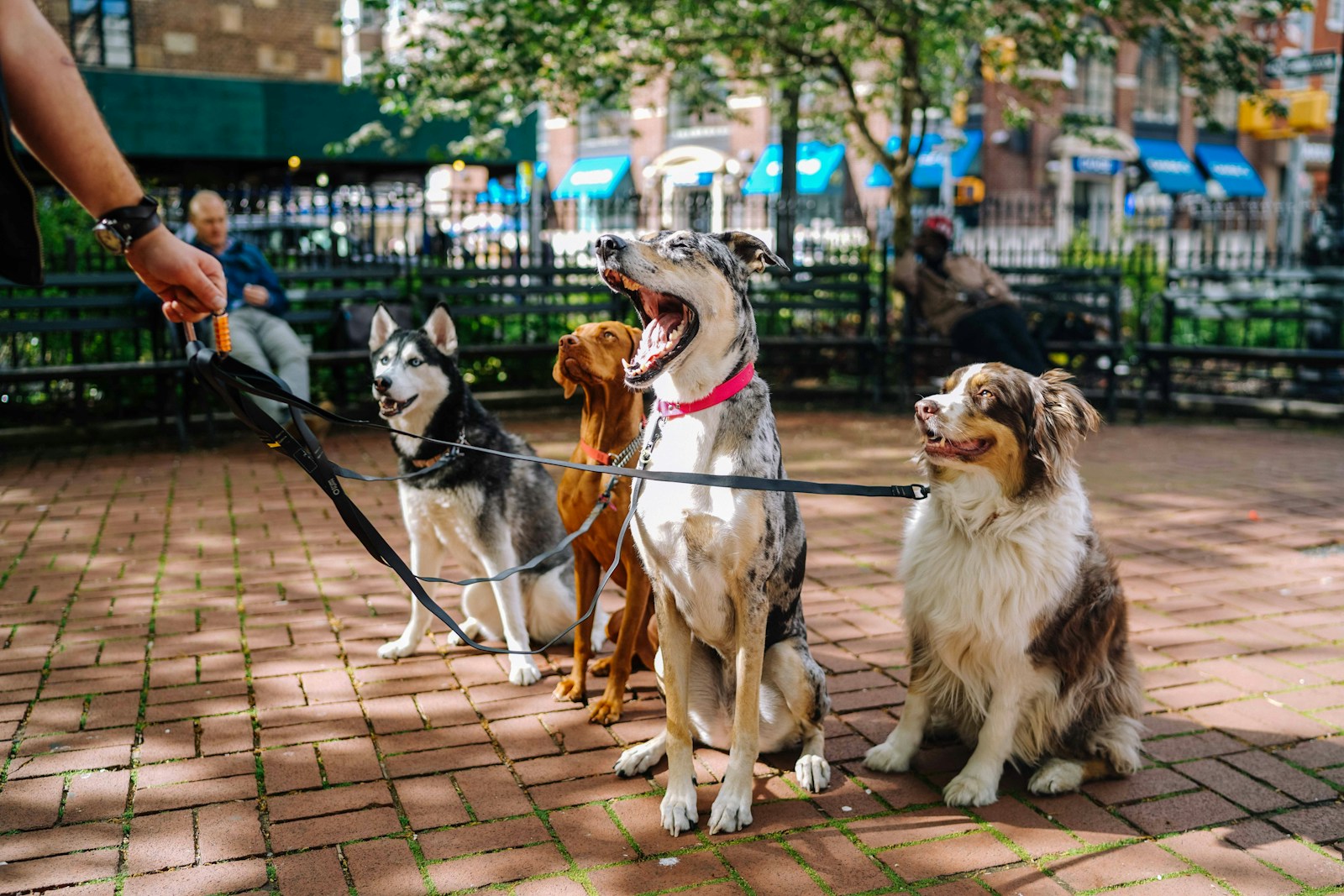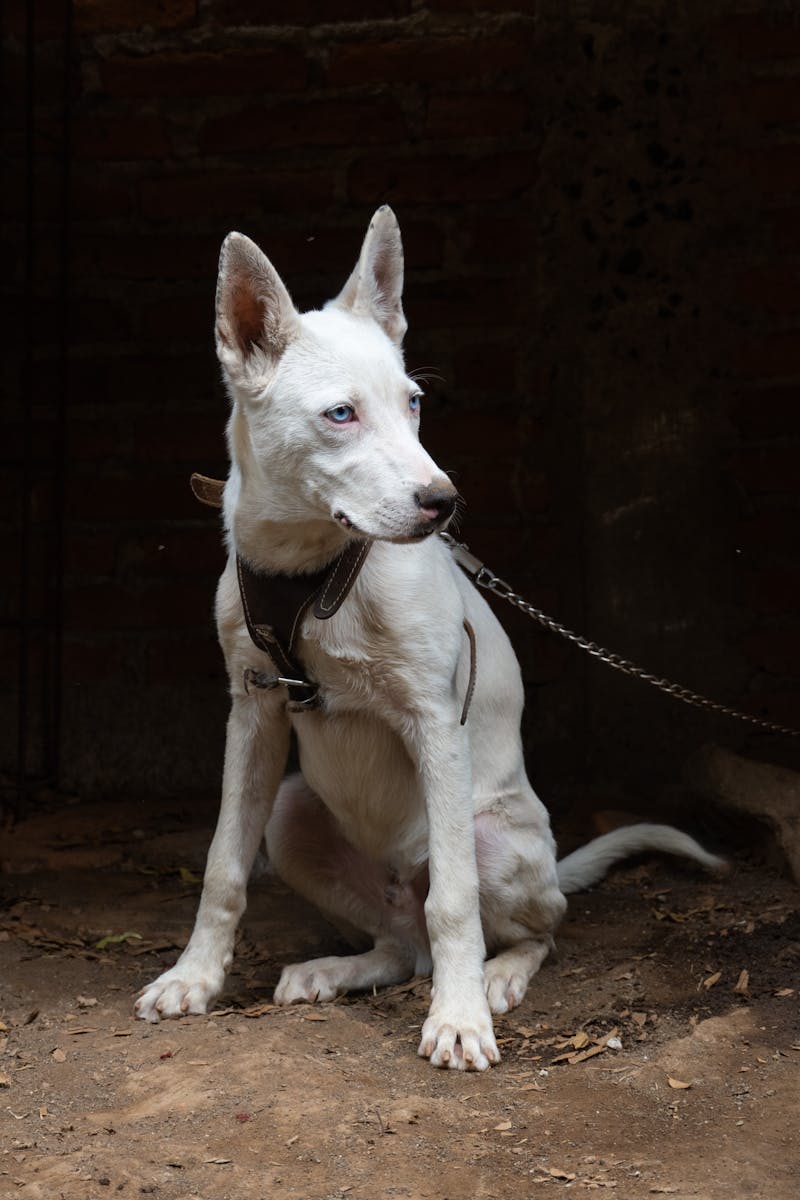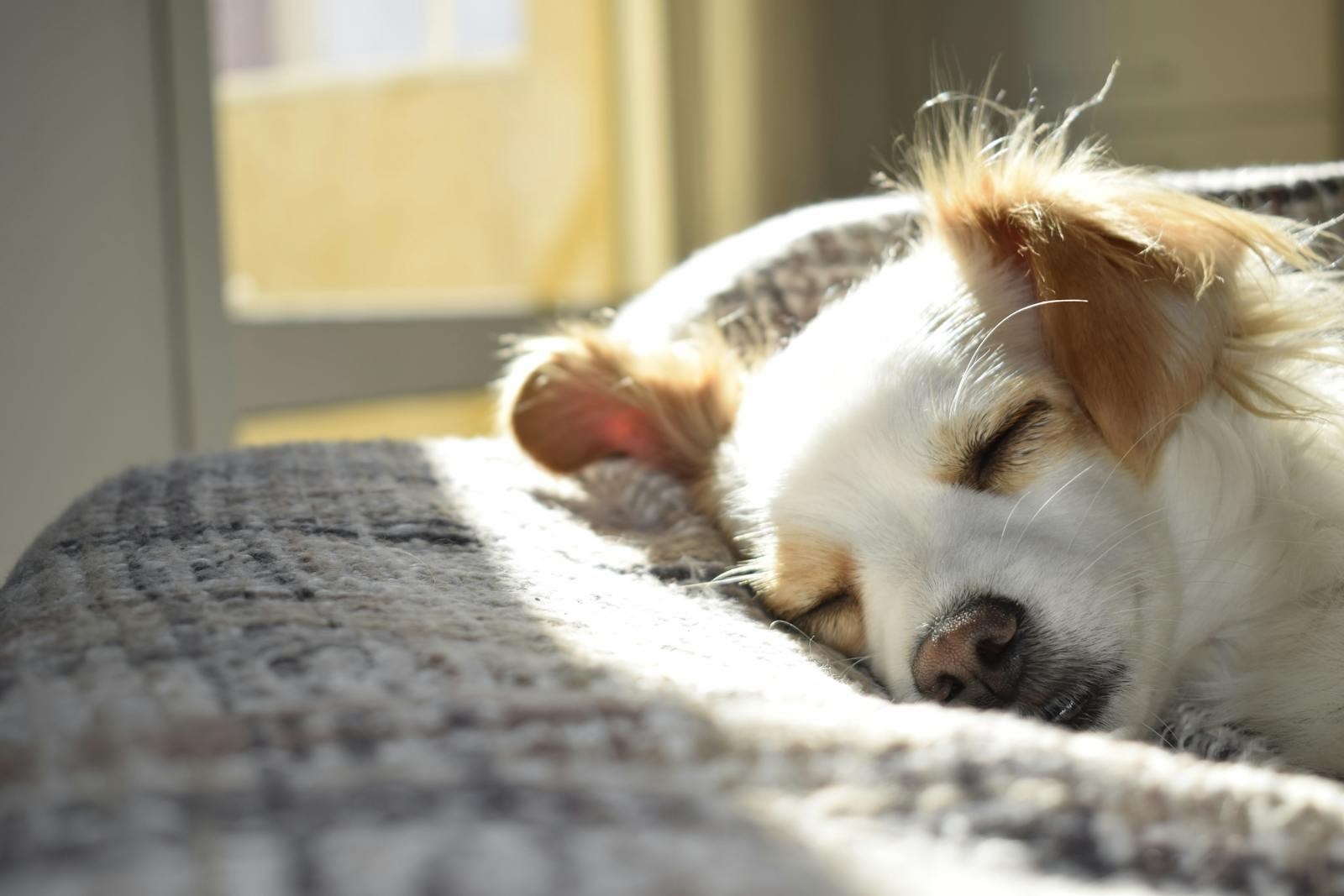How Age Affects Training: Adjusting Techniques for Senior Pets
Understanding Senior Pet Needs: Caring for Your Aging Companions
As our beloved pets age, their needs evolve significantly. Just like humans, senior dogs and cats experience physiological and psychological changes. It’s important for pet owners to understand these shifts to ensure their furry friends enjoy a comfortable and fulfilling life in their golden years. In this post, we’ll delve into the unique needs of senior pets and how aging impacts their physical and mental energy levels.
The Aging Process: What to Expect
Understanding the aging process in pets begins with acknowledging the physical and mental changes they undergo. Generally, pets are considered senior around the age of seven. Here are some key aspects to keep in mind:
- Physical Changes:
- Decreased Activity Level: Senior pets tend to have lower energy levels and might not engage in play as much as they used to.
- Weight Management Issues: Metabolism slows down, making it easier for pets to gain weight, leading to further health concerns.
- Joint Pain and Mobility Issues: Conditions like arthritis become more common, affecting their ability to move comfortably.
- Decreased Vision and Hearing: Many senior pets suffer from diminished senses, which can impact their interaction with the environment.
- Mental Changes:
- Cognitive Decline: Pets may experience changes in behavior, such as disorientation or confusion, similar to dementia in humans.
- Increased Anxiety or Stress: Aging can lead to increased anxiety, often due to changes in their environment or routine.
By being proactive about these changes, you can help improve your senior pet’s quality of life.
Key Needs of Senior Pets
To provide the best care for your aging companions, consider these critical areas:
1. Diet and Nutrition
- High-Quality Senior Diet: Transition to food formulated specifically for senior pets that is lower in calories but rich in essential nutrients.
- Joint Health Support: Look for diets that include glucosamine and omega fatty acids to help manage joint health.
- Frequent, Smaller Meals: Senior pets may benefit from smaller food portions spaced throughout the day to support digestion.
2. Regular Veterinary Checkups
- Routine Health Screenings: Schedule bi-annual vet visits to monitor their health, paying attention to dental health, weight, and mobility.
- Vaccinations and Preventative Care: Ensure their vaccinations are up-to-date and discuss parasite control options.
- Blood Tests: Regular blood tests can help detect early signs of diseases common in older pets such as kidney disease or diabetes.
3. Comfortable Living Environment
- Accessible Spaces: Make sure your home is easily navigable, with minimal stairs and non-slippery surfaces to prevent falls.
- Soft Bedding: Provide cushioned, supportive bedding to ease joint pain.
- Temperature Control: Senior pets may have trouble regulating body temperature, so make sure they have a comfortable place to rest regardless of the season.
4. Mental Stimulation and Engagement
- Interactive Toys: Invest in brain games and puzzles that can help keep your pet mentally stimulated.
- Gentle Exercise: Short, controlled walks can help keep them physically active without overexertion.
- Routine: Maintaining a regular schedule can help alleviate anxiety, offering predictability in their daily lives.
5. Emotional Well-Being
- Quality Time: Spend more time engaging in affectionate activities – pets often crave companionship as they age.
- Training and Socialization: Keep them socially engaged with other pets or people to prevent isolation and boredom.
- Adapt to Changes: Be responsive to their changing needs and adjust your lifestyle accordingly to enhance their comfort and happiness.
Real-World Examples: Success Stories
Several pet owners have shared their experiences in managing the needs of senior pets effectively:
- Max the Golden Retriever: Max’s owner noticed that he wasn’t as interested in long walks. After consulting with their vet, they adjusted his diet and began using gentle joint supplements. Now, he enjoys short, frequent strolls in the neighborhood that suit his energy levels.
- Bella the Cat: Bella began showing signs of disorientation. Her owner set up a consistent daily routine and included interactive toys that stimulated her mind, leading to improved focus and behavior.
These examples illustrate that personalized care strategies can significantly enhance your senior pet’s quality of life.
Conclusion: Ensuring a Joyful Transition Into Seniorhood
As our pets age, understanding and meeting their unique needs is paramount for ensuring their happiness and comfort. By focusing on diet, regular veterinary care, a comfortable living environment, mental stimulation, and emotional support, you can provide a loving atmosphere that respects their changing needs.
Remember, you are your pet’s advocate. Their transition into seniorhood can be a fulfilling phase of life filled with love and companionship.

Signs of Aging in Pets
Recognizing the signs of aging in our pets is vital for providing them with the care they need. As they transition into their senior years, pets undergo various physiological and behavioral changes that can affect their lives. Being aware of these signs helps pet owners take proactive measures to ensure their furry companions remain as comfortable and happy as possible.
Common Physical Signs of Aging
- Decreased Mobility:
- You may notice your pet struggling to jump onto furniture or rising slowly after lying down. This can be due to joint issues like arthritis, which becomes more prevalent as pets age.
- Weight Fluctuations:
- As metabolism slows, some senior pets may gain weight, while others may lose it. Monitoring their weight regularly is crucial, as this can lead to various health issues.
- Dental Disease:
- Bad breath, difficulty chewing, or excessive drooling can indicate dental problems, which are common in older pets. Regular dental check-ups can help mitigate these issues.
- Changes in Coat and Skin:
- An aging pet often experiences a duller coat and may also develop lumps or bumps on the skin. Regular grooming can help you keep an eye on these changes.
- Vision and Hearing Loss:
- Signs may include anxiety in new environments, difficulty finding toys, or hesitance to navigate stairs, which can indicate that their vision and hearing are diminishing.
Behavioral Changes to Watch For
- Increased Irritability:
- A normally friendly pet may become more irritable or snappy as they age. This change can be due to pain or discomfort they may not be able to communicate clearly.
- Changes in Sleeping Patterns:
- Many aging pets sleep more than they used to. However, some pets may experience insomnia or restless nights, indicating physical discomfort or health issues.
- Reduced Interaction:
- If your pet seems less interested in playtime or socializing, this could signal cognitive decline or a lack of energy, both common among senior pets.
- House-Training Issues:
- Senior pets might have accidents in the house, which could stem from age-related bladder control issues or cognitive dysfunction.
- Decreased Exploration:
- An older pet may show less interest in exploring their environment or learning new tricks, preferring to stay by your side instead.
Health Issues Associated with Aging
- Arthritis:
- This common affliction in senior pets leads to joint pain and decreased mobility. Look for signs like limping or reluctance to engage in physical activities.
- Kidney Disease:
- Symptoms may include increased thirst, frequent urination, lethargy, and weight loss. Regular veterinary check-ups are crucial for early detection.
- Cognitive Dysfunction Syndrome (CDS):
- Similar to dementia in humans, pets can experience confusion, forgetfulness, and sleep disturbances. Look for signs such as wandering aimlessly or altered sleep patterns.
- Diabetes:
- Symptoms include increased thirst and hunger, coupled with weight loss. Early intervention is key in managing this condition effectively.
- Heart Disease:
- As pets age, their heart can become weaker, leading to conditions like heart murmurs. Common signs include coughing, difficulty breathing, or decreased tolerance for exercise.
By being vigilant for these signs of aging, pet owners can provide timely care and intervention, enhancing their senior companions’ quality of life.
Conclusion: Empowering Pet Owners to Act When They See Changes
Understanding the signs of aging in pets is crucial for ensuring they receive the care they need as they grow older. Observing and recognizing physical changes, behavioral shifts, and potential health issues allows pet owners to respond effectively and provide appropriate care.

The Importance of Regular Check-Ups
While understanding senior pet needs is crucial, one of the most essential aspects of caring for your aging companions is ensuring they receive regular veterinary check-ups. These visits are vital in monitoring the health of senior pets and can lead to early detection of health issues, proactive management of chronic conditions, and overall improved quality of life. Here, we’ll break down why these check-ups are so significant.
1. Early Detection of Health Issues
- Routine Screenings: Regular veterinary visits allow for routine examinations that can catch potential health problems before they escalate. Conditions such as kidney disease, diabetes, and heart issues are common in senior pets, and early detection is critical for effective management.
- Diagnostic Testing: Blood tests and urinalysis are often recommended during check-ups for senior pets. These tests can identify changes in organ function and early signs of diseases, allowing for timely intervention.
- Preventive Care: Vets can provide recommendations for vaccinations, parasite control, and dental care based on the specific needs of older pets, ensuring that preventive measures are in place.
2. Management of Chronic Conditions
- Medication Adjustments: If your senior pet is already receiving treatment for chronic conditions, regular check-ups allow your veterinarian to monitor their response to medication and make necessary adjustments. This ensures that your pet is receiving the optimal dosage and type of medication to manage their condition effectively.
- Monitoring Progress: Consistent assessments by your vet can help track the progression of existing health issues, such as arthritis or diabetes, allowing for more tailored and effective management plans.
- Nutritional Guidance: Regular visits allow vets to evaluate your pet’s nutritional needs as they age. They can suggest dietary changes or supplements to better suit any health conditions or age-related changes your pet may be experiencing.
3. Maintaining Physical and Emotional Well-Being
- Physical Assessments: Vets can perform checks on mobility, weight, and overall physical condition, addressing any changes in movement or activity levels. This feedback is crucial since senior pets often have specific physical needs that differ from younger pets.
- Behavioral Observations: Regular check-ups provide an opportunity for veterinarians to assess any behavioral changes, anxiety, or cognitive disturbances. Your vet can recommend behavioral modification strategies or identify if medication might be effective in easing anxiety.
- Support and Resources: Regular visits mean you can continue to build a relationship with your veterinarian, allowing them to offer ongoing support, resources, and emotional guidance for both you and your pet. This partnership can be incredibly reassuring during your pet’s aging process.
4. Strengthening Your Bond
- Engagement with Professionals: Consistent veterinary visits create opportunities to ask questions, voice concerns, and discuss your pet’s specific needs and changes in behavior or health. This helps build a comprehensive understanding of your pet’s health while reinforcing the bond between you, your pet, and your veterinarian.
- Tailored Advice: Your vet will get to know your pet better over time, allowing them to provide personalized advice for care strategies, diet, and lifestyle choices tailored around your pet’s unique situation.
- Support Network: Establishing a strong relationship with your veterinarian means you’ll have a reliable support network for when health concerns arise and when navigating the challenges of caring for an aging pet.
Real-World Example: Importance of Regular Check-Ups
Consider the story of Charlie the Beagle. Charlie had always been an energetic dog, but as he reached the age of eight, his owner noticed a change in his activity levels. After a routine check-up, the veterinarian discovered early signs of hip dysplasia that could be effectively managed with medication and lifestyle modifications. Thanks to these regular veterinary visits, Charlie has been able to maintain a relatively active lifestyle, enjoying daily walks with his owner well into his senior years.
Conclusion: Ensuring Your Senior Pet’s Health Through Regular Check-Ups
As your pet ages, regular veterinary check-ups are crucial for ensuring their health and well-being. By being proactive, you can better manage any health conditions, enhance their quality of life, and create a supportive environment for them as they navigate their senior years.

Adjusting Nutritional Needs: Tailoring Diet for Senior Pets
As our pets age, dietary adjustments become critical to ensure optimal health and wellness. Nutrition is one of the key factors that can help manage the challenges associated with aging. Just like humans, senior pets have specific dietary needs that change as they grow older. Below, we will explore how to tailor their diet to meet these evolving nutritional requirements.
1. Understanding Senior Pet Nutrition
- Balanced Diet: Senior pets require a balanced diet that addresses their specific health concerns. Opt for food that is specifically formulated for senior pets, which is often lower in calories but higher in important nutrients like antioxidants, fiber, and protein.
- Reduced Calories: With their slowing metabolism, senior pets may gain weight more easily. Managing caloric intake is crucial to prevent obesity-related health issues.
- Quality Ingredients: Look for high-quality ingredients in your senior pet’s food. Whole protein sources, fruits, vegetables, and healthy fats can contribute to overall well-being.
2. Key Nutrients for Aging Pets
- Protein: Older pets still need high-quality protein to maintain muscle mass and overall health. Look for senior formulas that contain lean meats, fish, or eggs.
- Fiber: As pets age, digestive health may decline. A diet rich in soluble fiber can ease digestion and help prevent constipation.
- Omega Fatty Acids: Omega-3 and omega-6 fatty acids can help combat inflammation and support joint health, which is especially important for pets experiencing arthritis.
- Antioxidants: Nutrients like vitamins C and E can aid in fighting oxidative stress and may improve cognitive function.
3. Special Considerations for Health Issues
- Weight Management: If your pet is overweight, consult with your veterinarian to develop a weight management program that may include a prescription diet specifically designed for weight loss.
- Dental Health: Older pets often experience dental problems, which can affect their ability to eat. Soft food or a mix of wet and dry food can help facilitate eating while ensuring they receive adequate nutrition.
- Kidney Health: If your senior pet is at risk for or has been diagnosed with kidney disease, it is essential to limit protein and phosphorus intake while ensuring hydration.
4. Feeding Frequency and Portion Control
- Smaller, Frequent Meals: Consider dividing their daily food intake into smaller meals throughout the day. This can help with digestion and maintain energy levels.
- Portion Control: Measure their food according to their weight and health needs. This will help avoid overfeeding and reduce the risk of obesity.
5. Hydration is Key
- Fresh Water: Always provide fresh water. Senior pets can be at risk for dehydration, so ensure they drink enough water daily. Consider adding water or low-sodium broth to their food to encourage hydration.
- Wet Food: Incorporating wet food can also increase fluid intake, making it easier for pets who may not be drinking enough.
Real-World Examples: Nutritional Success Stories
Several pet owners have shared how tailored diets have positively impacted their senior pets:
- Rover the Beagle: After switching to a senior-specific diet rich in omega fatty acids and antioxidants, Rover’s energy levels increased significantly. His owner reported that he became more active and playful, which improved his overall quality of life.
- Sophie the Siamese Cat: Sophie’s owner made dietary adjustments by incorporating fiber-rich wet food to help with her constipation issues. The changes led to better digestion and a happier, more comfortable cat.
These success stories highlight the importance of personalized diet adaptations to enhance the lives of senior pets.
Conclusion: Ensuring Proper Nutrition for Senior Pets
Adjusting your senior pet’s diet to meet their changing nutritional needs is essential for their longevity and comfort. By focusing on a balanced diet, addressing key nutrients, and being cognizant of health considerations, you can provide your beloved companion with the nourishment they need in their twilight years.
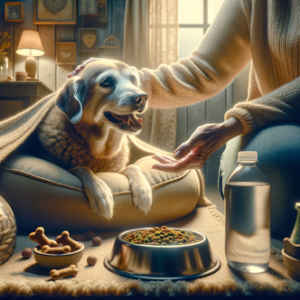
Exercise Adaptations for Older Pets: Creating Safe and Enjoyable Activity Routines
As our furry friends age, it’s crucial to adapt their exercise routines to accommodate their changing physical abilities and energy levels. Senior pets often experience reduced mobility, joint stiffness, and a decrease in stamina. Therefore, designing a safe and effective exercise regimen is vital for maintaining their health and happiness. Below, we outline some customized exercise approaches that can keep your senior pets active without overexertion or discomfort.
Note: Always consult with your veterinarian before starting any new exercise regime to ensure it’s appropriate for your pet’s condition.
Key Exercise Considerations for Senior Pets
1. Gentle Warm-Up Activities
- Importance of Warm-Up: Just like humans, senior pets benefit from a warm-up to prepare their muscles and joints for activity.
- Short Indoor Stretches: Before outdoor activities, guide your pet through slow, gentle stretches focusing on their legs, neck, and back.
- Walking Warm-ups: Start walks at a slow pace to allow your pet to adjust before increasing intensity.
2. Low-Impact Exercise Options
- Short Walks: Limit walks to 10-15 minutes, adjusting the duration according to your pet’s endurance.
- Swimming: Pools or shallow bodies of water can provide low-impact exercise, helping to build strength without stressing the joints.
- Play with Soft Toys: Engage your pet in short sessions of gentle play using soft toys that don’t require jumping or scrambling.
3. Adjusting Exercise Intensity
- Listening to Their Needs: Pay attention to your pet’s cues. If they seem fatigued or reluctant to walk, take a break or shorten the duration.
- Use of a Leash: Always use a leash to control their pace and ensure safety during walks.
- Taking Rest Breaks: Schedule frequent breaks, allowing your pet to rest and recharge.
4. Incorporating Mental Stimulation
- Interactive Games: Introduce slow-paced games like “hide-and-seek” with treats to engage your senior pet mentally without physical strain.
- Simple Obstacle Courses: Create low and gentle obstacle courses using soft cushions or low ramps to encourage light physical activity combined with mental challenges.
- Puzzle Feeders: Utilize slow feeders or puzzle toys that stimulate their minds while gently encouraging them to move.
5. Tailoring Routine to Individual Needs
- Consider Individual Health Conditions: Consider any pre-existing health issues (like arthritis) when creating an exercise routine.
- Customize Based on Energy Levels: Some pets may be more active than others; customize exercise sessions to fit the individual’s energy levels and preferences.
- Consistent Schedule: Maintain a regular exercise schedule to help establish a routine that your pet can anticipate and enjoy.
Real-World Examples: Success Stories
Many pet owners have successfully adapted their senior pets’ exercise routines to improve their quality of life:
- Charlie the Cocker Spaniel: Charlie’s owner noticed he was reluctant to play fetch. After adjusting to short play sessions followed by water therapy, his energy levels increased, and he began to enjoy engaging activities again.
- Luna the Pug: Luna’s owner incorporated short walks combined with brain games that focused on scent work, which provided the right blend of physical and mental stimulation. This routine has kept her alert and happy.
Conclusion: Vital Importance of Exercise for Senior Pets
Keeping your senior pets active is essential for their overall well-being. By incorporating gentle warm-ups, low-impact exercise options, tailor-made intensity adjustments, mental stimulation, and individualized routines, you can create a satisfying and safe activity regimen for them.
Remember, as with all things involving your pet, consult your veterinarian to establish the best practices suited for your companion’s specific health needs.
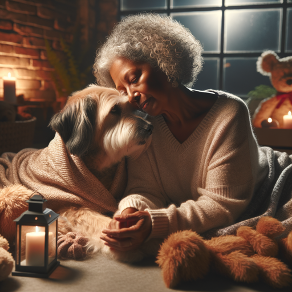
Mental Stimulation for Brain Health
Mental stimulation is as crucial for pets as it is for humans, especially for senior pets who may face cognitive decline. Engaging their minds through games and training can enhance their quality of life, improve behavior problems, and even stave off cognitive dysfunction. Here’s why and how to keep your senior pets mentally active.
Why Mental Stimulation Matters
- Prevents Cognitive Decline: Similar to humans, pets can experience cognitive decline as they age. Keeping their brains engaged helps slow down this process.
- Improves Mood and Reduces Anxiety: Engaging activities release endorphins, which can help reduce anxiety and improve overall mood.
- Strengthens the Bond: Participating in interactive games and training sessions can deepen the bond between you and your pet and enhance their overall happiness.
- Promotes Physical Health: Many mental stimulation activities encourage physical movement as well, supporting physical health alongside mental well-being.
Types of Mental Stimulation
Incorporating various forms of mental stimulation into your senior pet’s routine can keep their brains engaged and help combat boredom.
- Interactive Toys and Puzzles
- Look for toys that require problem-solving, such as treat-dispensing puzzles or toys with hidden compartments.
- Regularly rotate these toys to keep your pet engaged with new challenges.
- Training Sessions
- Please take a few minutes each day to practice basic commands or teach new tricks. Use positive reinforcement to encourage participation and boost confidence.
- Engage with clicker training, which enhances focus and provides a fun way to learn.
- Scavenger Hunts
- Hide treats around the house or yard for your pet to find. This taps into their natural hunting instincts and encourages exploration.
- Brain Games
- Introduce simple brain games, such as “find the treat” games or hiding toys under cups for them to uncover.
- Apps designed for pets, featuring moving objects on a screen, can also provide entertainment and mental engagement for tech-savvy pets.
- Social Engagement
- Arrange playdates with other pets or outings to dogs parks, allowing them to interact with other animals. This socialization provides both mental and physical stimulation.
Tips for Successful Mental Stimulation
- Be Mindful of Physical Limitations: Senior pets may not have the same stamina as younger animals. Start with short sessions and gradually increase the duration, always watching for signs of fatigue.
- Use Positive Reinforcement: Always reward your senior pet with praise, petting, or treats when they engage with toys or complete a task. This not only boosts their confidence but also makes them more likely to participate in the future.
- Create a Daily Routine: Incorporate mental stimulation into your pet’s daily routine. Consistent engagement promotes better mental health and helps alleviate anxiety.
- Monitor Your Pet’s Response: Observe how your pet responds to different activities. Some may find toys too challenging, while others may thrive on complex games. Adjust the activities based on their preferences and abilities.
Real-World Examples: Success Stories
- Oliver the Beagle: Oliver’s owner noticed he was becoming more lethargic in his senior years. They began a daily routine of short training sessions using fun tricks. This not only kept Oliver engaged but also rekindled his playful spirit.
- Ginger the Poodle: After introducing puzzle toys into Ginger’s routine, her owner observed a remarkable improvement in her activity levels. Ginger seemed to enjoy the challenge, and her owner loved watching her solve puzzles with enthusiasm.
These success stories highlight the incredible impact mental stimulation can have on your senior pet’s overall well-being and happiness.
Conclusion: Ensuring Your Senior Pet Stays Mentally Engaged
Prioritizing mental stimulation for your senior pet is essential in promoting cognitive health and emotional well-being. Engaging them with interactive activities, puzzles, and training keeps their minds sharp and strengthens the bond you share. Remember, a mentally stimulated pet is a happy pet!

The Importance of a Routine for Senior Pets
Maintaining a consistent daily routine is essential for senior pets, offering numerous benefits that cater to their unique needs. As pets age, they may struggle with anxiety and confusion, making a predictable schedule vital for their well-being. Here’s a closer look at the significance of establishing a routine for your aging companions:
Benefits of a Routine for Senior Pets
- Reduces Anxiety and Stress
- Predictability: A consistent routine gives senior pets a sense of safety and security. Knowing when it’s time to eat, go for a walk, or have playtime helps them navigate their day with confidence.
- Less Confusion: Regular schedules can help combat cognitive decline and confusion in senior pets, making them feel more grounded and centered.
- Supports Physical Health
- Consistent Meal Times: Feeding senior pets at the same times each day can help regulate their metabolism and maintain a healthy weight.
- Regular Exercise: Scheduling short, gentle exercise sessions can keep mobility issues at bay and support joint health without overwhelming their energy reserves.
- Enhances Mental Engagement
- Scheduled Playtime: Incorporating regular play sessions into the daily routine keeps senior pets mentally stimulated, which can slow cognitive decline and increase overall happiness.
- Training Sessions: Even simple commands can be incorporated into your routine, offering mental challenges that sharpen their focus and improve coordination.
- Improves Sleep Patterns
- Established Bedtime: A consistent bedtime helps signal to your pet when it’s time to wind down. This can assist in improving sleep quality, critical for aging pets who may suffer from insomnia or restlessness.
- Routine Nightly Check-ins: Having a set time each evening for cuddles or quiet petting can reassure your pet as they settle down for the night.
- Strengthens Bonding and Trust
- Quality Time Daily: Dedicating time each day to interact with your senior pet enhances your bond, promoting emotional well-being and trust.
- Engaged Care: Regular routine fosters a sense of dependable companionship where your pet knows they can rely on you for support and love.
Real-World Examples: Pets Thriving Through Routines
- Charlie the Beagle: Charlie’s owner started a morning routine that included a 15-minute stroll, breakfast at 8 AM, and a midday snuggle session. By the end of the week, Charlie appeared more relaxed and engaged, leading to a happier disposition overall.
- Luna the Siamese Cat: Luna was initially hesitant during playtime. By introducing a structured play schedule each evening, her owner noted reduced anxiety levels and an eagerness to engage with toys, enhancing her quality of life.
Tips for Establishing a Routine
- Start Simple: Begin by defining a daily schedule that includes feeding times, walks, play sessions, and rest periods.
- Stay Consistent: Strive to stick to your routine as much as possible, even on weekends or holidays, to maintain predictability.
- Be Observant: Adjust the schedule to suit your pet’s changing energy levels and needs, ensuring their comfort at all times.
- Involve the Family: Encourage all household members to participate in the routine, which fosters a sense of security for your pet.
- Use Visual Cues: Consider creating a visual schedule to help you remember and consistently follow through on the designated tasks.
Conclusion: Ensuring a Joyful Transition Into Seniorhood
As our pets age, understanding and meeting their unique needs is paramount for ensuring their happiness and comfort. By focusing on diet, regular veterinary care, a comfortable living environment, mental stimulation, and emotional support, you can provide a loving atmosphere that respects their changing needs.
Remember, you are your pet’s advocate. Their transition into seniorhood can be a fulfilling phase of life filled with love and companionship. Have you ever had to adapt your care routine for a senior pet? Share your experiences and tips in the comments below!
Call to Action
If you found this post helpful, please consider sharing it with fellow pet owners to help spread awareness of the unique needs of senior pets. Your companionship matters just as much in their senior years, so let’s work together to give them the best life possible!
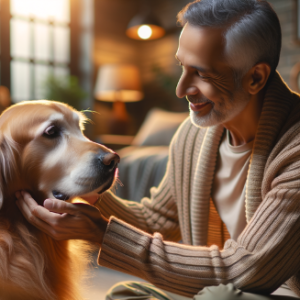
Safety Considerations for Training Senior Pets
Training senior pets requires more than teaching new commands; it also involves ensuring their safety during the learning process. As our furry companions age, their physical abilities and cognitive functions change, necessitating special considerations when engaging in training activities. Here we outline important safety measures to keep in mind while training your senior pets.
1. Assess Physical Limitations
- Consult Your Vet: Have a veterinarian evaluate your senior pet’s health before starting any training regime to identify specific limitations.
- Observe Mobility: Take note of any signs of joint pain or stiffness, and avoid training activities that could exacerbate discomfort.
- Adapt Training Sessions: Tailor exercises to suit their abilities. For example, favor low-impact activities over strenuous exercises.
2. Choose a Safe Environment
- Safe Space: Ensure the training area is free from hazards like slippery floors, sharp furniture edges, and stairs that may pose a risk of falls.
- Leash and Harness: Use a proper leash and harness to maintain control over your pet during training, especially if they are excitable or unsteady on their feet.
- Minimize Distractions: Select a quiet, familiar space for training to help your senior pet focus better and reduce anxiety.
3. Monitor Temperature and Comfort
- Consider Climate: Be mindful of temperature conditions; avoid training during extreme heat or cold, as senior pets may struggle to regulate their body temperature.
- Provide Breaks: Allow for frequent breaks during training sessions to let your pet rest and hydrate. This is critical for minimizing fatigue and preventing overheating.
- Comfort Matters: Utilize supportive mats or soft bedding during training sessions to protect sore joints and keep your pet comfortable.
4. Incorporate Gentle Methods
- Positive Reinforcement: Use treats, praise, and gentle encouragement instead of harsh reprimands. Positive reinforcement is more effective and less stressful.
- Short Sessions: Keep training sessions brief, around 5-10 minutes, to avoid overwhelming your senior pet. Gradually build duration as they adapt.
- Limit Physical Strain: Avoid commands or tricks that require jumping, climbing, or quick pivots, as these can cause injury to joints and muscles.
5. Stay Alert for Signs of Distress
- Recognize Stress Signals: Pay attention to signs of discomfort, such as panting, whining, or avoidance behaviors. If you notice any, take a step back and adjust the session accordingly.
- Know Their Limits: Not every pet will have the same stamina. Respecting their limits is crucial—if they seem fatigued or uninterested, it’s time to end the session.
- Check for Pain: If your pet exhibits sudden changes in behavior, particularly after exertion, consult a veterinarian to rule out any underlying issues such as arthritis or other health problems.
6. Include Cognitive Engagement
- Mental Stimulation: Engage their minds with gentle puzzle toys, scent work, or light obedience exercises that encourage mental engagement without physical strain.
- Routine and Understanding: Establish a consistent training routine that aligns with your pet’s natural schedule. A predictable routine will help reduce anxiety and foster a sense of security.
- Gradual Progression: As your senior pet becomes more comfortable with training, gradually introduce new commands or tricks, ensuring you keep sessions enjoyable and light-hearted.
Conclusion
Training senior pets poses unique challenges, but with appropriate safety considerations in place, you can create a rewarding experience for both you and your companion. By assessing their physical and mental capabilities, choosing safe environments, incorporating gentle training methods, and staying mindful of their needs, you can enrich their lives while ensuring their well-being.
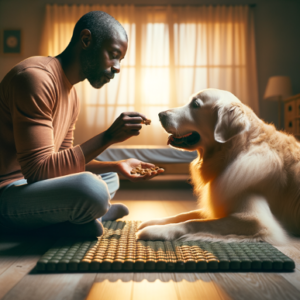
Teaching New Tricks: Gentle and Effective Training Techniques for Senior Pets
As our pets transition into their senior years, many owners may wonder if it’s still possible to teach them new tricks or skills. While it’s true that senior pets may have different learning capacities compared to their energetic younger counterparts, the good news is that they are still capable of learning and adapting. The process not only strengthens your bond with your aging companion but also enhances their mental stimulation and offers them an enjoyable way to engage with you.
In this section, we will explore effective training techniques that cater specifically to the needs of senior pets, ensuring that these sessions remain gentle, effective, and enjoyable for both of you.
Key Techniques for Training Senior Pets
1. Understanding Their Limitations
- Pace Yourself: Senior pets may have slower reaction times and less energy. It’s vital to keep the training sessions brief (5-10 minutes). Start with one trick at a time, allowing your pet plenty of time to grasp each new skill.
- Monitor Physical Condition: Before beginning any training, ensure that your pet is in a comfortable position and not in pain. This may include checking their joints or ensuring that they’re not experiencing any discomfort due to underlying health issues.
2. Positive Reinforcement
- Use Treats Wisely: Offer small, healthy treats as rewards. Choose options that are low in calories and suitable for senior pets, ensuring they maintain a healthy weight.
- Praise and Affection: Besides treats, verbal praise and gentle petting can significantly motivate senior pets. Your positive interactions foster an encouraging environment for learning.
- Consistency is Key: Use the same commands and cues consistently so that your pet can easily associate them with the desired action.
3. Gentle Methods of Cueing
- Visual Cues: For pets that may have hearing loss, using visual signals, such as hand gestures or body movements, can be effective. This approach can enhance understanding and retention of tricks.
- Low-Impact Activities: Focus on tricks that don’t require intense physical activity. For example, “shake hands” or “spin” can be taught with minimal strain.
4. Be Patient and Understanding
- Recognize Their Efforts: Acknowledge that senior pets may take longer to learn new tricks. Celebrate small victories and be patient when they don’t grasp a concept immediately.
- Adjust Expectations: Understand that some tricks may be more easily taught than others. Prioritize tricks that align with their physical capabilities and mental acuity.
5. Incorporate Mental Stimulation
- Puzzle Toys: Use toys that stimulate your pet’s mind. Finding treats hidden inside can be an engaging way for them to learn and think critically while having fun.
- Daily Routine: Incorporate the new tricks into your daily routine, reinforcing what they have learned during regular tasks, making it a natural part of their day.
Real-World Examples: Success Stories
- Oscar the Beagle: At 10 years old, Oscar had become less active and more set in his ways. His owner began teaching him to “turn around” using a gentle hand gesture and treats. Within a few weeks, he eagerly awaited training sessions and showcased a higher energy level during engagement, leading to an enriched quality of life.
- Lucy the Dachshund: Lucy’s owner noticed her struggling with some activities, so they opted for simple trick training involving fetching a soft toy. It not only provided physical exercise but also mental stimulation. Each time she returned the toy, the owner would offer plenty of praise, making Lucy’s interest in training thrive despite her age.
Conclusion: Continuing the Learning Journey with Senior Pets
Teaching new tricks to senior pets can yield rewarding outcomes, enhancing their mental and emotional well-being while deepening your connection. By being patient and applying gentle techniques tailored to their abilities, you’ll find that training is not only feasible but fulfilling.

Encouraging Regular Movement: Tips for Promoting Play and Activity in Senior Pets
In the previous sections, we discussed the various needs of senior pets, emphasizing the importance of diet, healthcare, and emotional well-being. One critical area we must also address is maintaining physical health through regular movement and play. Encouraging your aging companions to stay active is vital for their overall well-being, as it helps manage weight, improves joint mobility, and enhances mental health. Here are some effective tips to promote regular movement and play for your senior pets:
1. Tailored Exercise Routines
- Short, Frequent Walks: Dogs may not have the stamina for long treks anymore, but brief walks several times a day can keep them active without overexertion. Aim for 10-15 minutes, adjusting the duration based on their energy levels.
- Interactive Play Sessions: Engage your pets in gentle play using toys that are easy to play with. Roll a ball across the floor or dangle a feather for your cat. Limit these sessions to prevent fatigue but aim for two or three short playtimes daily.
- Water Exercise: If your pet enjoys water, swimming can be an excellent way to keep them active without putting stress on their joints. Treats can be a reward for being comfortable in the water, leading to more engagement with this form of exercise.
2. Create a Stimulating Environment
- Obstacle Courses: Set up small obstacle courses in your home or yard using items like poles, pillows, or cones that guide their movement and encourage gentle exercise. Tailor the setup to accommodate your pet’s mobility needs.
- Treat Trails: Create scavenger hunts by hiding treats around the house or yard. This encourages movement as they sniff out each treat, stimulating both their mind and body.
- Rotate Toys: Regularly introduce new or different toys to keep your pet interested in play. Switch out toys every few weeks to maintain their enthusiasm and stimulate their curiosity.
3. Utilize Technology and Resources
- Pet Fitness Trackers: Consider using a fitness tracker or app designed for pets. These gadgets can monitor activity levels and motivate you to engage more with your pet, creating goals and challenges for daily movement.
- Doggy Daycare or Playdates: Arrange for supervised playdates with other gentle pets or consider a doggy daycare that accommodates senior dogs. Social interaction often spurs movement and keeps them engaged.
4. Consider Their Preferences
- Observe Preference for Activities: Some pets may prefer interactive games or gentle fetch, while others may enjoy more quiet activities like tugging or hide-and-seek. Tailor the movement activities based on what your pet enjoys.
- Participate in Their Daily Routine: Integrating movement into daily routines, like taking the stairs instead of the elevator or encouraging your pet to join you while doing household tasks, provides natural opportunities for activity.
5. Monitor and Adapt
- Watch for Signs of Fatigue: Always monitor your pet for signs of exhaustion or discomfort during playtime. Take breaks when needed to ensure they are not overdoing it. Remember that quality trumps quantity!
- Adjust Activity Based on Health Status: Consult your veterinarian to determine suitable activities based on your pet’s specific health conditions or mobility issues, especially if they require medication or have physical limitations.
Real-World Examples: Success Stories
- Charlie the Beagle: Charlie’s owners noticed he had become lethargic and was not interested in his favorite tug-of-war game. They started with short sessions to play his favorite game and gradually increased the duration as he regained enthusiasm for play.
- Mittens the Cat: Mittens was reluctant to move around. By incorporating a feather toy drag across the floor, her owner discovered that a little bit of coaxing could lead to play sessions. Mittens now enjoys these short moments of fun regularly.
By understanding how to encourage movement in senior pets, you can help them lead more active and fulfilling lives.
Conclusion: A Commitment to a Healthy Lifestyle for Senior Pets
As we have explored, encouraging regular movement and play can significantly enhance the well-being of your senior pets. Through tailored exercise routines, stimulating environments, and engaging in their preferred activities, you can foster a healthy lifestyle for your furry companions that benefits both their physical and mental health.

Understanding Joint Health: Common Joint Issues in Senior Pets and Their Impact on Training and Activity
Joint health is a significant concern for senior pets and can have a profound effect on their overall quality of life. As pets age, they may experience various joint issues that not only affect their movement but also influence their training and activity levels. By understanding these challenges, pet owners can take proactive steps to help their furry companions maintain an active and fulfilling lifestyle.
Common Joint Issues in Senior Pets
- Arthritis:
- Arthritis is among the most common joint problems in senior pets, characterized by inflammation and pain in the joints.
- Symptoms may include limping, stiffness, difficulty climbing stairs, or reluctance to jump or play.
- Hip Dysplasia:
- A hereditary condition particularly prevalent in larger breeds, hip dysplasia leads to abnormal development of the hip joint.
- This can result in chronic pain and reduced mobility, further complicating training and playtime.
- Osteoarthritis:
- Often synonymous with arthritis but refers specifically to the degeneration of cartilage in the joints, leading to pain and stiffness.
- With age, pets may be less inclined to engage in physical activity due to discomfort.
- Ligament Injuries:
- Torn ligaments, such as cranial cruciate ligament (CCL) tears, can cause significant pain and instability in the knee.
- Recovery from these injuries can be lengthy and may restrict normal activity levels significantly.
- Joint Flavor (Joint Flare-Ups):
- Sudden spikes in pain can occur from weather changes or overexertion, making training sessions a challenge.
- Awareness of these flare-ups is crucial for scheduling appropriate activity levels.
Adjusting Training and Activity Based on Joint Health
To ensure your senior pet remains active without exacerbating their joint conditions, consider these adjustments to training and activity:
- Shorter, More Frequent Sessions:
-
- Instead of long training or play sessions, opt for several shorter sessions throughout the day.
- This approach minimizes wear and tear on their joints while keeping them engaged.
- Low-Impact Activities:
-
- Consider swimming or gentle walking on soft surfaces that are easier on their joints.
- Activities that minimize jumping or sudden movements can help prevent pain.
- Gentle Stretching Exercises:
-
- Incorporating stretching routines into their daily schedule can aid mobility and alleviate joint stiffness.
- Consult with a veterinarian or pet physical therapist for suitable stretches.
- Incorporate Joint Supplements:
-
- Joint health supplements containing glucosamine and chondroitin may help alleviate discomfort.
- Always consult your veterinarian before introducing new supplements to ensure safety and efficacy.
- Use of Aids and Equipment:
-
- Consider using ramps, slings, or supportive gear, like braces, to assist your pet in moving comfortably.
- These aids can make activities less stressful on aging joints.
Monitoring Changes in Your Senior Pet
Being vigilant about changes in your senior pet’s behavior can be crucial in managing joint health:
- Observe Their Activity Levels:
-
- Regularly assess their willingness to engage in play or respond to commands.
- A change from active engagement to lethargy can indicate joint pain or discomfort.
- Pay Attention to Signs of Pain:
-
- Signs can include whimpering, reluctance to be touched, changes in posture, or marked changes in gait.
- If you notice any signs of discomfort, consult with your veterinarian for proper evaluation and guidance.
- Regular Check-Ups:
-
- Routine veterinary exams can help detect and manage joint issues early, preventing them from worsening.
- Your vet may recommend specific treatments or therapies tailored to your pet’s needs.
Conclusion: Caring for Senior Pets’ Joint Health
Maintaining your senior pet’s joint health is essential for improving their quality of life. By recognizing common joint issues and adapting training and activities, you can help ensure they stay comfortable and engaged. Always collaborate with your veterinarian to tailor care to your pet’s specific needs and make informed choices about their health.

The Role of Pain Management: Options and Importance in Training Senior Pets
As our pets age, they often face various discomforts, chief among them being pain. Understanding how to manage this pain is crucial, not just for the pet’s comfort, but also to enhance their quality of life and ability to engage in training. This section will explore practical pain management options and why they are vital in ensuring senior pets can learn, interact, and enjoy their everyday activities.
Understanding Pain in Senior Pets
Pain in senior pets can manifest in many ways, including:
- Behavioral Changes: Increased irritability or withdrawal can signal discomfort.
- Decreased Mobility: A reduction in activity or hesitance to engage in play may indicate pain.
- Vocalization: Whimpering or yelping during movement can point to underlying pain issues.
- Altered Eating Habits: Pets in pain may lose interest in food, or show difficulty eating due to jaw or mouth discomfort.
Recognizing these signs is the first step in effectively managing your senior pet’s pain.
Essential Pain Management Options
There are several approaches to managing pain in senior pets, each tailored to suit individual needs:
1. Veterinary Pain Relief Medications
- Non-Steroidal Anti-Inflammatory Drugs (NSAIDs): These medications can significantly reduce inflammation and pain, making them a commonly prescribed option for arthritis and joint pain.
- Opioids: In severe cases, your vet may prescribe opioids to help manage chronic pain, especially post-surgery or in end-stage conditions.
- Joint Supplements: Glucosamine and chondroitin can support joint health and improve mobility over time.
2. Alternative Therapies
- Physical Therapy: Sessions with a pet physiotherapist can promote strength, flexibility, and range of motion.
- Acupuncture: This ancient practice can help relieve chronic pain by stimulating specific points on the body, corresponding to pain relief.
- Massage: Giving your pet regular gentle massages can improve circulation and ease muscle tension.
3. Weight Management Strategies
- Balanced Diet: Adhering to a diet specifically designed for senior pets can help maintain a healthy weight, reducing stress on joints.
- Exercise Plans: Gradually introduce physical activities that your pet can manage comfortably. Low-impact exercises like swimming can be particularly beneficial.
4. Environmental Modifications
- Soft Bedding: Invest in orthopedic beds that provide extra support for aging joints.
- Ramps and Stairs: Help your pet navigate your home easily to prevent falls and avoid unnecessary pain.
- Temperature Control: Keep their resting areas warm, as cold environments can exacerbate discomfort in joints.
5. Training Considerations
- Positive Reinforcement: Use gentle praise and treats to encourage responsive behavior without putting additional strain on your pet.
- Short Training Sessions: Keep training sessions brief, allowing for rest intervals suited to your pet’s energy levels and comfort.
- Incorporating Pain Management: Include tips on recognizing signs of pain during training to adjust activities accordingly.
Real-World Examples: Successful Pain Management Stories
- Roxy the Beagle: After noticing that Roxy struggled to jump onto her favorite chair, her owner consulted with a vet, who prescribed a combination of NSAIDs and joint supplements. Roxy is now back to playing fetching games with her sibling.
- Charlie the Cat: Charlie experienced gradual mobility loss due to arthritis. His owner adapted his living environment with ramps, and sought physical therapy sessions. This approach not only managed Charlie’s pain but also kept him engaged and active.
Conclusion: The Importance of Pain Management in Senior Pets
Managing pain in senior pets is essential for enhancing their quality of life, ensuring they remain active participants in their training and interactions. By utilizing a combination of veterinary care, alternative therapies, environmental modifications, and tailored training approaches, pet owners can significantly improve their elder companions’ comfort and happiness.
Finding the right balance between pain management and engagement can truly transform your senior pet’s experience.

Conclusion: Ensuring a Joyful Transition Into Seniorhood
As our pets age, understanding and meeting their unique needs is paramount for ensuring their happiness and comfort. By focusing on diet, regular veterinary care, a comfortable living environment, mental stimulation, and emotional support, you can provide a loving atmosphere that respects their changing needs.
Key Points to Remember:
- Compassionate Care: Approach training and routine adjustments with empathy. Recognize that mobility issues, cognitive decline, and sensory changes impact how senior pets interact with their environment.
- Modify Training Techniques: Adapt training methods to be gentle and reinforce positive behaviors. Use positive reinforcement rather than punitive measures to cultivate a nurturing learning environment.
- Awareness of Physical Limitations: Stay mindful of their physical capabilities; shorter training sessions and patience in activities can help reduce their frustration.
- Regular Health Assessments: Regular vet check-ups are crucial. They allow for early detection of health issues that could affect training and behavior.
- Create a Safe Environment: Ensure that your living spaces are safe and easily navigable for senior pets, reducing stress and anxiety during activities.
Remember, you are your pet’s advocate. Their transition into seniorhood can be a fulfilling phase of life filled with love and companionship.
news via inbox
Nulla turp dis cursus. Integer liberos euismod pretium faucibua


